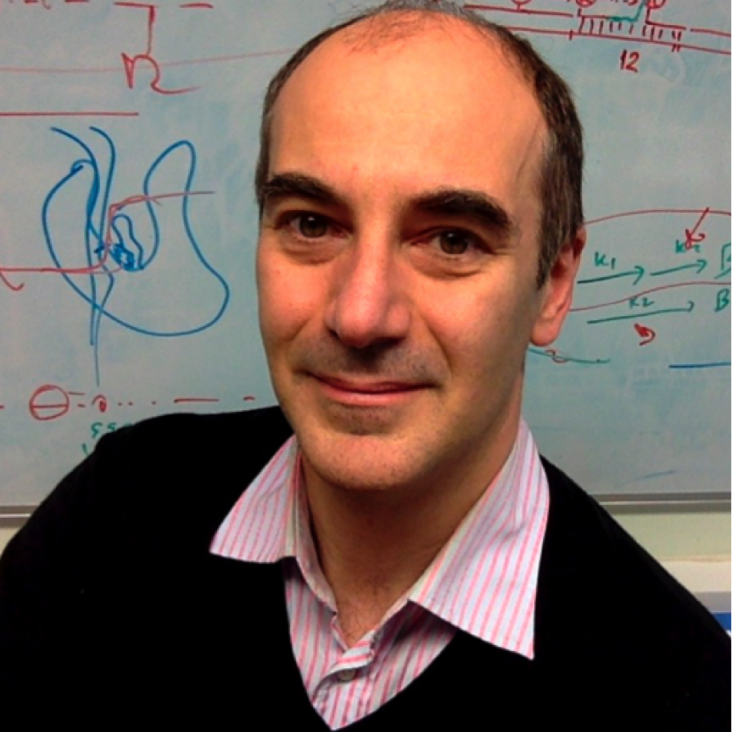RNA polymerase redistribution supports growth in E. coli strains with a minimal number of rRNA operons
Abstract:
Bacterial transcription by RNA polymerase (RNAP) is spatially organized. RNAPs transcribing highly expressed genes locate in the nucleoid periphery, and form clusters in rich medium, with several studies linking RNAP clustering and transcription of rRNA (rrn). However, the nature of RNAP clusters and their association with rrn transcription remains unclear. Here we address these questions by using single-molecule tracking to monitor the subcellular distribution of mobile and immobile RNAP in strains with a heavily reduced number of chromosomal rrn operons (Δrrn strains). Strikingly, we find that the fraction of chromosome-associated RNAP (which is mainly engaged in transcription) is robust to deleting five or six of the seven chromosomal rrn operons. Spatial analysis in Δrrn strains showed substantial RNAP redistribution during moderate growth, with clustering increasing at cell endcaps, where the remaining rrn operons reside. These results support a model where RNAPs in Δrrn strains relocate to copies of the remaining rrn operons. In rich medium, Δrrn strains redistribute RNAP to minimize growth defects due to rrn deletions, with very high RNAP densities on rrn genes leading to genomic instability. Our study links RNAP clusters and rrn transcription, and offers insight into how bacteria maintain growth in the presence of only 1–2 rrn operons.Cover Feature: Bleaching‐resistant, Near‐continuous Single‐molecule Fluorescence and FRET Based on Fluorogenic and Transient DNA Binding (ChemPhysChem 12/2023)
Bleaching-resistant,near-continuous single-molecule fluorescence and fret based on fluorogenic and transient DNA binding
Abstract:
Graphical Abstract
A general strategy to circumvent photobleaching by replenishing fluorescent probes via transient binding of fluorogenic DNAs to complementary DNA strands attached to a target molecule is presented. Using two orthogonal sequences, the authors show that their method is adaptable to Förster resonance energy transfer (FRET) and can be used to continuously study the conformational transitions of dynamic structures for extended periods (>1 hr).
Abstract
Photobleaching of fluorescent probes limits the observation span of typical single-molecule fluorescence measurements and hinders observation of dynamics at long timescales. Here, we present a general strategy to circumvent photobleaching by replenishing fluorescent probes via transient binding of fluorogenic DNAs to complementary DNA strands attached to a target molecule. Our strategy allows observation of near-continuous single-molecule fluorescence for more than an hour, a timescale two orders of magnitude longer than the typical photobleaching time of single fluorophores under our conditions. Using two orthogonal sequences, we show that our method is adaptable to Förster Resonance Energy Transfer (FRET) and that can be used to study the conformational dynamics of dynamic structures, such as DNA Holliday junctions, for extended periods. By adjusting the temporal resolution and observation span, our approach enables capturing the conformational dynamics of proteins and nucleic acids over a wide range of timescales.


